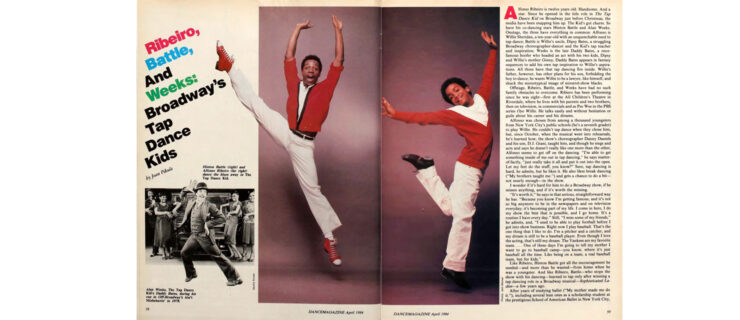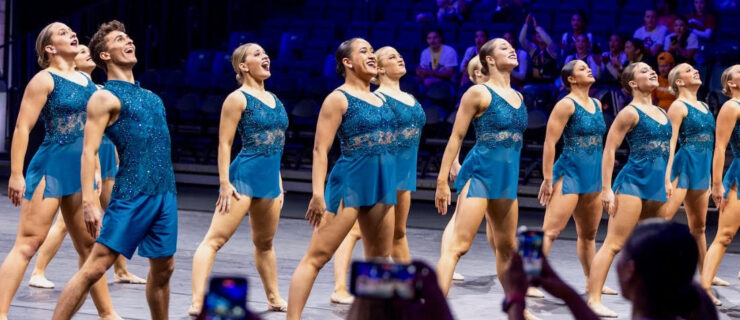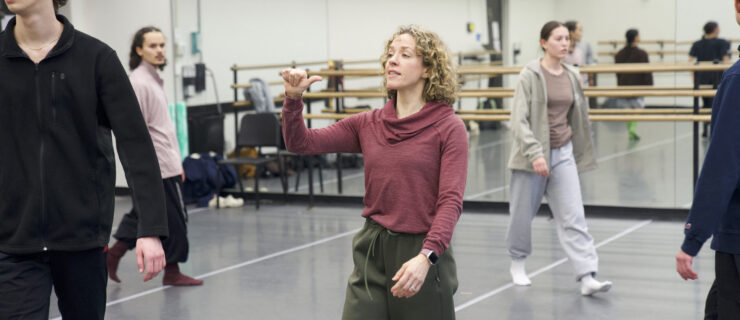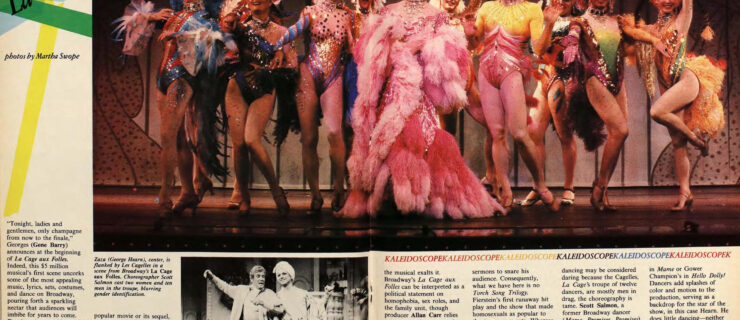Dance Matters
Ailey’s Revelation
Judith Jamison celebrates 20 years of guiding Ailey.
For Judith Jamison—now marking two decades of leading Alvin Ailey American Dance Theater and The Ailey School—looking back over an extraordinary career has only provided jet fuel for pressing onward. When asked if succeeding the late Alvin Ailey as artistic director was daunting, she remembers having to pull together with supportive dancers and hit the ground running as a City Center season loomed, with no time to mourn the sudden loss of her great friend and mentor. But she squashes any notion that she then faced, or still must tackle, challenges as a woman at a pinnacle of power and responsibility still rare in dance. Jamison, as a rule, simply allows no room for negativity.
“Not that I would take notice of it,” Jamison says. “I’m spiraling upward. I don’t need anything dragging me down.”
In 1988—following a 15-year run as Ailey’s legendary muse, she founded her own company, The Jamison Project, which she led until Ailey’s untimely death the following year. So she came back to New York, picked up Ailey’s blueprint, and set off to do some serious upward spiraling.
The flight and subsequent achievements of Jamison and the Ailey organization include: the establishment of AileyCamp, which brings dance education to inner-city children and now has branches across the U.S.; the opening of The Joan Weill Center for Dance, Ailey’s grand midtown home base; the launching of The Ailey Extension; and the partnership with Fordham University to offer a rigorous BFA in dance. On Jamison’s watch, the company became the world’s most successful dance institution. The budget has gone from $7 million in 1989 to $24 million in 2009. Ailey performed at President Bill Clinton’s inaugural celebration, participated in Olympics ceremonies (Atlanta, 1996, and Salt Lake City, 2002), and enjoyed a historic, post-apartheid residency in South Africa. Along the way, Jamison has garnered armloads of awards—notably, the Kennedy Center Honors, a Primetime Emmy Award for Outstanding Choreography, a National Medal of Arts, France’s Commander of the Order of Arts and Letters, a Bessie, and Dance Magazine and Dance Teacher Awards. This year, Time named her one of its 100 most influential figures.
In a 2007 essay written for the NPR series “This I Believe,” she spoke of the dance studio as “hallowed ground, where the realities of self and spirit are revealed” in an honest vulnerability shared between choreographer and dancer. These values underlie all aspects of her career—from performance to choreography to leadership—and account for the remarkable accessibility that makes this imposing, dignified woman a figure much loved around the world.
“Ailey is a microcosm of how you want the world to act, how civil we need to be toward one another,” she says. “As Dr. John Henrik Clarke used to say, ‘Civil-ization.’ Do unto others. We are all on this little blue ball called the Earth. Under the skin, we are all the same. Alvin was so conscious of that, and I am too.”
Jamison plans to step down in 2011—“just retiring the title,” she insists, “but staying very much connected.” This month, the company launches a New York City Center season in tribute to its leader with an opening night gala hosted by Denzel and Pauletta Washington (Dec. 2). New programming includes a Jamison-inspired world premiere by Ronald K. Brown, works by Robert Battle and company member Matthew Rushing, a new production of Jamison’s 1993 Hymn (with Anna Deavere Smith live onstage), and Among Us (Private Spaces: Public Places), a Jamison premiere set to original jazz compositions by Eric Lewis. Repertory works will be drawn from the nearly 100 pieces commissioned by Jamison during her tenure.
Jamison’s brand of inspiration can be summed up in these words from her 1993 autobiography, Dancing Spirit: “Believe that the gift is in you. Accept it. God is in you. Let your light shine.” —Eva Yaa Asantewaa
Diagnosis of a Faun
Where a doctor and Diaghilev meet.
A doctor steps out of his normal role in the hospital to partner a ballerina in a Sleeping Beauty pas de deux. An actor with cerebral palsy dances a Nijinsky-like Faun. Two ballet-trained dancers discard their dependence on steps. Only choreographer Tamar Rogoff would think of combining them. In Diagnosis of a Faun, set in an operating room and a mythical forest, two dancers—one playing a nymph, the other a doctor—and a real doctor in the role of the surgeon, linked by their fascination with the half-human Faun, wander between science and art. Rogoff’s performers navigate the crossover of healing and romantic love. They explore the space between detachment and empathy with a mind/body intelligence.
Rogoff’s work comes from a lifetime of studying the body. Seeking a footing in the medical world, she interviewed and worked with Dr. Phillip Bauman, orthopedic surgeon for New York City Ballet and American Ballet Theatre. As they traded languages, Bauman came to a new, physical understanding of the intricacies of ballet partnering. Through these explorations of the worlds of medicine and dance, the pas de deux emerged as a metaphor for a doctor and patient’s shared responsibility in healing. In the production the part of the surgeon is played by family physician Dr. Donald Kollisch, who is affiliated with the City College of New York.
In actor Gregg Mozgala, who suffers from cerebral palsy, Rogoff saw a parallel between his hyper-vigilance of his body and what Dr. Bauman feels when he operates. She first saw Mozgala play Romeo in a four-person Romeo and Juliet. They have worked together for a year and a half, using the inner sensing and physical shaking of Rogoff’s process to help him perform as a dancer for the first time. By integrating the separate worlds of his beautifully developed torso and under-developed legs, they discovered the character of the Faun. In a searing solo, he performs something most of us take for granted. Placing one foot in front of the other, he walks in a straight line—for him, a phenomenal act of balance. Rogoff says emphatically that it wasn’t his disability that drew her to Mozgala, but his energy. Mozgala projects the animal prowess of the Faun that we all have within us.
In the Sleeping Beauty pas de deux and in the Faun’s ardent duets with Emily Pope-Blackman and Lucie Baker, Rogoff challenges the dancers to forget their habitual patterns of stylized dance. She encourages them to discover movement through sensory awareness of their own anatomy.
Each participant possesses an intimate connection with the body, and this bond creates new communities. Doctors, people with disabilities, and dancers empathize with each other through their common struggle toward awareness. They support and confront one another as they cross the boundaries between science, art, and the personal.
Rogoff wants audiences to enjoy all aspects of the Faun. Half-man, half-animal, the Faun is beyond society’s rules. As with Nijinsky’s Faun, Rogoff’s Faun is full of life yet solitary, a creature that both attracts and repels. She asks us to look at the Faun with the detached eyes of a scientist and the empathy of an artist. Then we can see the Faun in ourselves.
Diagnosis of a Faun
, with sets and costumes by Robert Eggers, music by Jean Sibelius and Tchaikovsky, and sound score by Leon Rothenberg, will be performed Thursdays through Sundays from December 3–20, at La Mama E.T.C. in the East Village, NYC. —Alice Bloch
Picutred: AADT in Jaimson’s
Hymn. Photo by Nan Melville, Courtesy Ailey.




